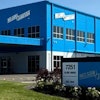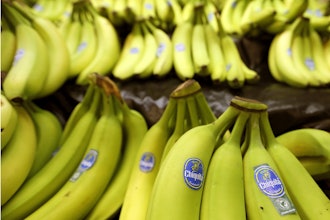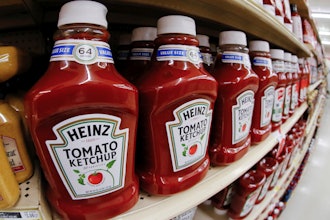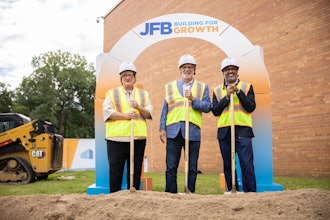When it comes to food processing, using large amounts of energy is a given. Whether running HVAC and freezer systems all day or keeping lines and processing equipment productive, the costs add up. The food processing and production industry overall consumes 15 percent of U.S. energy demand. Commercial operations in the U.S. spend more than $38 billion per year on lighting alone.
Lighting offers an easy opportunity to significantly reduce overall energy use while benefiting all aspects of your operations. While other options exist, including sensor-driven fluorescent lamps and natural lighting, LED lighting offer the best opportunity for inexpensive installation, low-maintenance and big energy savings. A retrofit to replace your lighting with LED options offers your facility many opportunities to save money, lower energy use and reduce waste while increasing employee comfort and safety.
Why LEDs?
There are a number of reasons to consider efficient LED lighting including savings, reduced maintenance and less waste.
- Saving Energy: The most popular reason to switch to efficient lighting is clear: LED lamps and fixtures can result in savings on your energy bill. The average industrial fluorescent lighting fixture can consume two times or more power than its LED equivalent. Across a facility, this adds up to wasted energy and money. In most cases, LED lighting can reduce typical lighting costs by up to 75 percent.
- Lower Prices and Longer Life: LED systems typically cost more than their fluorescent equivalents before subsidies. However, LEDs can last longer than fluorescent lamps, reducing the number of times you need to replace lamps. The price of LED lamps is also expected to drop significantly in the future, as increases in availability and efficiency continue to reach the market. With less replacements, you also need to store fewer extra lamps on site. This frees up room in closets around your facility, and removes one more potentially toxic item from your stock.
- Rebates and Discounts: Energy providers and governments often provide significant rebates for investments in LED and energy-saving technologies, including lamps, fixtures and sensors. Yet, many of these rebates are on a first-come, first-served basis, or expire after a set number of years. Taking advantage of efficient lighting today locks in savings before rebates disappear, offering the maximum savings in the short-term.
- Reducing Heat: While 5 percent of energy budgets in food production on average go to lighting, the costs do not stop there. Older lighting gives off most of its power as heat — up to 90 percent — demanding more air conditioning and constant use of refrigeration and freezing systems. Equipment has to work hard to keep the processing facility cold, requiring more energy and more money. LED lights run far cooler than fluorescent equivalents, helping a facility stay naturally cooler and allowing HVAC to run less often.
- Use Sensors to Save Money: The most efficient light is one that’s turned off. Sensors detect movement or heat to trigger lights on and off only when needed, cutting down energy use significantly. Sensors in a facility can reduce waste by nearly 70 percent during normal use. Traditional fluorescent lamps are not a good fit for sensors because these types of lamps wear out quickly when turned off and on frequently, and take more than a few seconds to start up. LEDs can turn off and on instantly, and have a minimal likelihood of failure during their lifespan when paired with sensors.
Benefits Beyond Energy Savings
Energy-efficient lighting does more than reduce energy use and costs. With certain types of LED lighting, a facility can meet food safety certification standards and increase employee comfort and safety just by switching lamps.
- Meet Certification Requirements: Food processing facilities require certifications such as NSF to ensure that machinery and equipment do not contaminate food or fail under the stresses of food production. Traditional lamps can be made compliant, but run the risk of chemical and glass contamination if broken. LED lamps can be constructed of extremely hard, water- and dust-resistant plastics that prevent breakage.
- Employee Comfort: LED lighting options can have positive impacts on employee comfort, reducing strain and headaches while matching natural lighting patterns. LEDs can follow the concept of “human-centric lighting,” changing flicker, intensity and brightness to reduce or prevent fatigue and strain. Lamps can be programmed in an instant to change color or temperature, dim or match the color and intensity of daylight. These subtle changes can lead to improved performance and effectiveness from a facility’s staff.
- Safer Work Environment: Beyond more even lighting, efficient lighting options contribute to the overall safety of your facility. With fewer fluorescent lamps on-site, the risk of glass or toxic chemical exposure when a lamp breaks is removed. A single breakage on site can shut down production, or, in the most extreme cases, spread toxic chemicals like mercury throughout the area or contaminate food.
How To Move Forward
If the decision is made to move forward with more efficient lighting, companies also need to know how to get started and what it will cost. Most installations do not require a full-scale replacement of all lighting fixtures, and instead are retrofits. The result is an increased up-front cost versus fluorescent replacements, but a much longer service life.
There are three primary types of retrofit installations, each with their own costs and benefits: Types A, B and C.
- Type A: The most common approach to replacing older lighting, Type A swaps outdated fluorescent lamps for LED equivalents that are compatible with the existing fixture and ballast. The existing fixture and ballast remain in place, simplifying installation and reducing up-front costs. Type A retrofits require the least up-front cost and can be completed by in-house maintenance staff, but will require more expensive ballast replacement in the short term.
- Type B: Type B retrofits remove the fluorescent lamp and ballast, leaving the existing fixture but requiring the lamp to be directly wired. With one less part that can fail, the LED lamps can go much longer without service. Type B retrofits require a higher up-front cost that includes an electrician for initial installation, but offer longer lifespans and less overall maintenance after installation.
- Type C: A less common retrofit strategy, Type C replaces the lamp and ballast with an LED lamp and driver. Type C is more expensive upfront and requires an electrician, but offers much less long-term maintenance and advanced features that increase lamp lifespan and reduce power usage.
For companies on a smaller budget that want to reap the immediate benefits of power-efficient lighting, Type A installations may be a good choice. With low cost and complexity, a majority of products and retrofits are Type A or B.
Depending on the situation, replacement may also be a viable option. While not appropriate for most operations, the age, wear and type of existing fixture may demand replacement. This option has the highest up-front costs, but matches other options in long-term efficiency and lifespan.
Jay Rodgerson is a lighting and energy expert at Grainger.






















